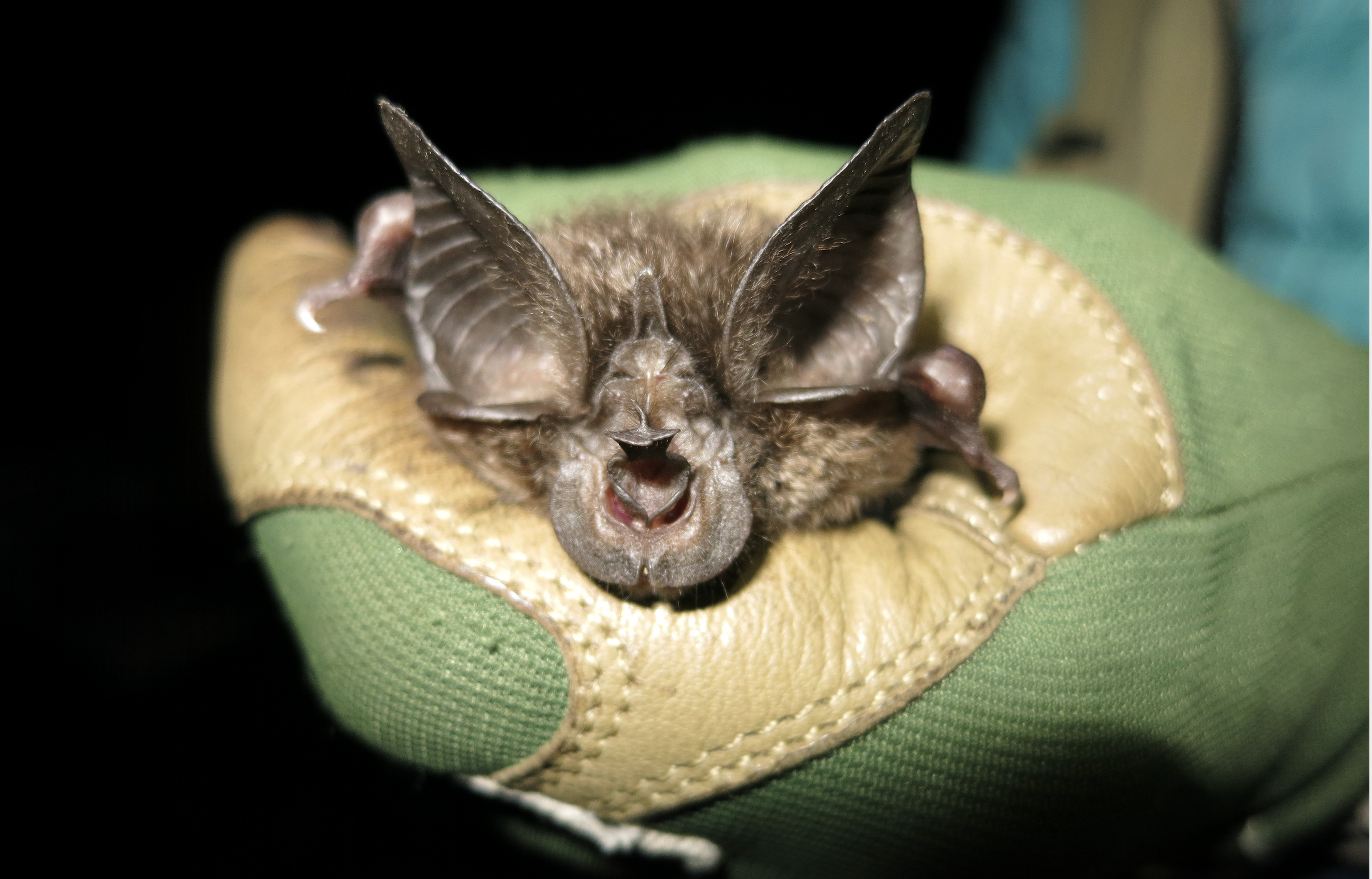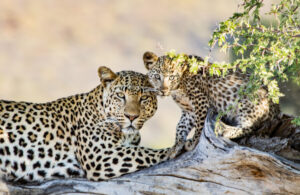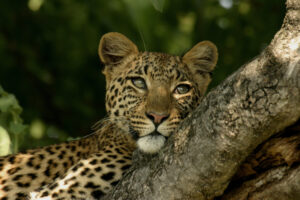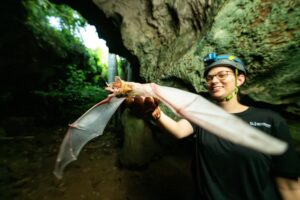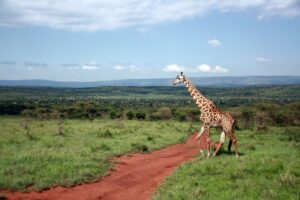
*A version of this article originally appeared in the June 2022 Bush Telegraph newsletter. You can read our recent newsletters and sign-up to receive these in your inbox on our Bush Telegraph newsletter page.
When scientists from Bat Conservation International headed into the cloud-wreathed highland forests of Rwanda’s Nyungwe National Park on a quest to find the elusive Hill’s horseshoe bat (Rhinolophus hilli), their expectations were low. Nobody had seen the species since 1981. Despite much advance preparation by the local park rangers, many feared the gargoyle-like flying mammal had already become extinct.
However, in the early hours of one rainy expedition trek, a fluffy creature with hugely exaggerated facial features flew right into one of their mist-nets (very fine nets used for safely catching birds and bats). Rightly describing the bat as ‘comical’ for its notably wrinkled nose and oversize ears, the astonished team were the first people to see one of these bats in 40 years.
Working quickly to document as much data as possible about the curious creature, the researchers recorded the call of Hill’s horseshoe bat for the first time and discovered it has an unusually low frequency – a bass to complement the sopranos of the 80 other species of horseshoe bat. The recordings enable the researchers to locate the species by sound, allowing them to seek out these marvellous bats without disturbing them. Thus it opens the door to further studies on their population and behaviour, and eventually to sequencing their DNA.
If you’ve been inspired and want to find out more, give us a call or enquire now to speak to an expert.
